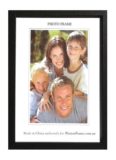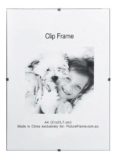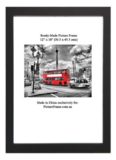![]() To write about the Norman Lindsay Limited Edition Etchings that were created by one of Australia's, if no the most,
To write about the Norman Lindsay Limited Edition Etchings that were created by one of Australia's, if no the most,  prominent artist is a formidable task! However this post is neither an essay nor a disquisition on one of Australia's most famous sons. Our intention here is merely to provide a working snapshot of the artist's work within the context of just one of the several arts he transcended, that of his art on paper, or etchings. Although Norman Lindsay, ( NL ) excelled in writing, painting, sculpting, poetry, prose, cabinetry and other artistic fields, it is by way of his famous etchings that the general public know of him. Indeed, and so far as we concerned ... it is the facsimilia of his etchings that this post will concern itself with.
prominent artist is a formidable task! However this post is neither an essay nor a disquisition on one of Australia's most famous sons. Our intention here is merely to provide a working snapshot of the artist's work within the context of just one of the several arts he transcended, that of his art on paper, or etchings. Although Norman Lindsay, ( NL ) excelled in writing, painting, sculpting, poetry, prose, cabinetry and other artistic fields, it is by way of his famous etchings that the general public know of him. Indeed, and so far as we concerned ... it is the facsimilia of his etchings that this post will concern itself with.
Perhaps it is best by beginning to clarify what the difference is between an original etching and its facsimile. The former is an original work of art, the latter is a copy of the original.
With regard to Norman Lindsay facsimile etchings available for sale in our online store, these pieces are not originals etching of course, but facismilia, or identical copies thereof. The original etchings are far more valuable and we have sighted some currently for sale for around AUD20,000, and more. This is why a facsimile print, or a copy, is cheaper and far more affordable than an original.
Then again, if a facsimile, or copy, of an original is an open edition, that is, with no set edition size, number or limitation, then it is merely an inexpensive commercial reproduction unlikely to appreciate in value and highly unlikely to be sought after by art and print collectors.
However, the Norman Lindsay facsimile etchings in our store are closed editions, restricted, or limited, to a few hundred prints only. This limitation is what can make art collecting a good business investment, as well as being a most pleasurable pastime.
And these are not the only benefits. By becoming an art collector, not only helps to diversify one's portfolio, a collector also becomes and art supporter but also expands one's learning and knowledge about the visual arts in general.
Importantly, limited editions, become even scarcer that their original edition number as time goes by and the years pass. People's forgetfulness, misuse, mishaps, misadventures, floods, storms, fires and other man-made or natural events all contribute to whittle down the available editions.
A United States insurance loss assessment industry source estimates that nearly half of all limited editions are lost or cannot be located by their owners in as little as 8 years from the date of issue.
Thus, the strongest and best known investment tenet beheld by man ( or woman ), the Law of Supply and Demand, will almost invariably favour better and higher re-selling prices for investors since, the less the supply, the higher the price.
NL's really needs no great literary amplification here. While he prolifically sketched, painted, sculpted and wrote, it is his works on paper that are readily easily recognizable. His etchings abound with irreverence bordering on insolence, replete with licentious nymphs, lascivious satyrs, licentious sileni, and lecherous fauns all cavorting in magical, esoteric woods and mythical forest glades.
The etchings were largely in black-and-white, created by pressing an acid-etched plate and then in-filled image on a sheet of paper, thus leaving all ink tracings that made up one or more images of the etching.
With time, the plates tended to become damaged, soiled or worn, thus the small runs produced in pulling prints, since the longer the run, the greater the loss of detail and increased degradation in quality.
Our artist, NL, and his wife Rose Lindsay, produced hundreds of plates and etchings, however many editions and plates generated only a couple of hundred or so etchings. Some etchings, notably the Facsimile Etchings, were produced after NL's death, and are fully authorized by his estate and managed by Odana Editions and Bloomfield Galleries, or latterly, the Odana Blomfield publishers.
But now, and perhaps more interestingly, let us proffer to our readers a compendium on the inception and development of the Norman Lindsay Limited Edition Etchings.
After the enormously successful 1974 etching exhibition at Sydney's Bloomfield Galleries, the steady rise in prices and increasing scarcity of the originals, made it obvious that many art collectors and enthusiasts sought the Norman Lindsay etchings for their collections, but could not easily afford them.
The exhibition organizers, sponsors and management acknowledged this, and after consulting with Jane Lindsay, decided to publish three folios of limited edition facsimile reproductions of the etchings at more affordable prices.
Thus the Norman Lindsay Facsimile Etchings were launched with widespread publicity later in 1974 at the Bloomfield Galleries. The metal plates, which had been cancelled, and all the printing materials, later destroyed, were also displayed.
Pertinently, each Facsimile Etching was hung next to the original etching to showcase and demonstrate the unimpeachable quality of the reproductions. The first set of Facsimile Etchings was presented in three folios, these being: Folio 1, Enter the Magicians, The Innocents, Decoy, Argument, Folio 2, The Bauble, Bargains, Dryad, The Butterfly and Folio 3, Self Portrait, C Sharp Minor Quartet, Life in the Temple.
The exhibition also showed to the greater public that, in many quarters, artistic censorship was still being enforced. Full page advertisements were published with the Sydney Morning Herald and the Australian newspapers. The Australian accepted and published the advertisements. The Sydney Morning Herald, after examining the advertising submission and images also also proceeded.
Delivery of full-size sample photographs, however, sparked a series of newspaper management meetings until a boardroom directive not to publish was issued. Ascertaining the motives or reasonings that prompted the publishing ban was quite difficult.
The Bulletin, on 14 December 1974, reported under the heading 'All The Nudes fit to Print': The organizers kept asking the management at the Herald what exactly they were objecting to, could they point, perhaps, to any particular feature ?
The vague answers repeatedly mentioned "parts of our society" and "sections of our readership which, unlike the readers of other papers, tend to complain to us with their objections". It was surmised, however, that it was the main male nude figure which was deemed objectionable.
Two decades later, in November 1994, the Bloomfield Galleries staged a commemorative exhibition of the forty Norman Lindsay Facsimile Etchings, published over twenty years, together with the remaining, cancelled plates from the first editions.
A few years later, In 1998 unpublished etchings were released for the first time as Facsimile Etchings. All the unpublished etchings are now rare with most of them being excruciatingly rare. In most instances the only known examples are located in the Mitchell Library folios.
The year 2005 saw the first release of Facsimile Etchings where the originals had only previously been available in limited edition books. The etching Columbine from the 1918 Colombine and Your Fate from the 1927 The Etchings of Norman Lindsay were released as Facsimile Etchings in specially printed folios, sold together, similar to the first release of Facsimile Etchings in 1974.
Later, in 2006, Atlantis, the 100th Norman Lindsay Facsimile Etching was released and published. To commemorate this special event, an exhibition was held exhibiting all one hundred Norman Lindsay Facsimile Etchings published from 1974 to 2006. Importantly, in 2006, the Western Australian Art Gallery purchased the only complete collection of Norman Lindsay’s published etchings, approximately two hundred original etchings in all.
The facsimile etchings were printed by Kevin Langridge of the Langridge Press organization. The printers, who had printed the two volume Angus & Robertson Norman Lindsay: Two Hundred Etchings, were already fully conversant with the originals and agreed to undertake what proved to be a difficult task of printing the facsimile etchings.
Because these were to be facsimiles of the original, these had to be printed in several colours, this being the only way to match the tones tints and shades quality of the originals. This meant making separate CYMK plates for each colour. After working with the originals, a Master Printmaker remarked “These etchings are so intricate, you don't realize until you dissect them like this just how superb a craftsman Norman Lindsay was.
The internet revolution spawned enormous advances in technology that dramatically changed printing methods. The printer still needs to be aware of the many subtle tints, tones, colour and tone changes in these seemingly monochrome works but now the image is digitally scanned with the latest and best Dianippon Screen 737 Laser scanning machine.
Naturally, the original works are not subjected to this process, but are generally at hand for reference. At the film stage, colour, contrast, sharpness and tone ranges of each colour are analyzed and the printers may need multiple sets of an image before concurring which will be best for printing.
A Chromalin chemical proof is then generated prior to printing. Once the the copyright owners approve the proof, the plates are then produced by the printer to suit his machine settings. The negative film that is supplied to the platemaker is laid in contact with the unexposed aluminium plate in a vacuum frame under great pressure to ensure that after exposure to a specific light source, an accurate transfer of the image has taken place from film to plate.
After this process, the plate is sent through an automatic developing processor to dissolve the unexposed areas and harden the actual image areas ready for the printing press. This process is repeated for each of the colour separations that make up the facsimile image.
The printing machine used for these facsimiles is a Heidelberg Speedmaster 72FP five colour press. The plates are loaded onto the press and basic make-ready takes place, which includes mixing lightfast inks, cleaning all roller systems to ensure accurate colour consistency throughout the run and running set-up sheets through to get all of the plates to accurate registrations.
The colour and tonal values of the image are constantly reassessed until the correct levels are achieved to simulate the original etchings. This generally takes a number of hours to complete with adjustments to the colour of the inks, density of impressions and balance between the individual colours being a slow and gradual process.
At the end of the printing process the plates are scribed whilst still on the machine and then destroyed in conjunction with all of the make-ready and set-up sheets. The printed sheets are then set aside for drying. At this stage they are covered, sealed and signed by the printer for security reasons.
After printing is complete, the facsimiles are then transferred to Avon Graphics where an embossed seal is stamped in the lower right-hand corner of the image in order to protect both the original etching and the facsimile. They are individually numbered by hand in editions of 550, the edition number being a multiple of 55, the highest edition number of any of the original published etchings.
The copyright on all of Norman Lindsay's etchings is held by Lin Bloomfield and Odana Bloomfield enjoys the exclusive right to publish the Norman Lindsay Facsimile Etchings. All the editions are individually hand-numbered with authenticity guaranteed by an embossed seal in the lower right hand corner of the image, the round seal featuring a raised dot at the 6:00 o'clock position.
All facsmile etchings are issued with a Certificate of Authenticity and once an edition is sold out, the image is nevermore re-published. All the materials used in production are destroyed after the print run is completed, thus ensuring that the edition is genuine and no more can be produced. Facsimiles have up to thirteen proofs issued which are distributed to libraries, the publishers, printers and other persons concerned with their publication.
The Facsimile Etchings are in the collections of many, disparate, public entities and institutions, some of which being: the National Library of Australia, Canberra; Mitchell Library, Sydney; New South Wales Parliamentary Library, Sydney; Fisher Library, University of Sydney, Sydney; Bray Reference Library, State Library of South Australia, Adelaide; and the National Trust Norman Lindsay Gallery and Museum, Faulconbridge, NSW.
in addition to the preceding public bodies and institutions, for nearly half a century, both Australian and overseas collectors, art connoisseurs and investors have been purchasing the Norman Lindsay Facsimile Etchings to enhance and complement their art on paper collections.
All works are printed upon 238gsm acid-free, archival quality Teton paper. The off-white or white paper colour tints are specifically chosen in order to be as close to the original colour of the papers that were used. Purchaser of these works are assured that all original printing materials used for the Facsimile Etchings have been destroyed and the metal and photographic plates used in the printing process have been cancelled.
If looking to purchase a genuine facsimile etching, intending purchasers should note that genuine prints ( not fakes ) always feature a raised, round, embossed seal as detailed earlier and an indentifiable Certificate of Authenticity which every reputable and authorized re-sellers should always supply as part of the purchase.
While on the subject, we have actually sighted a few certificates of dubious provenance over the years which were significantly different for the originals, a couple of which are duplicated below. However, should a prospective purchase entertain doubt, there are details provided in the genuine Certificate enabling a telephone verification, should the need arise.

Those readers who, by design or fortune, are wise, astute or fortunate enough to acquire a Limited Edition Facsimile Etching ought to consider framing it "properly". By that we mean to avoid the temptation to frame it into one of those cheap and popular, but really, unsuitable department store ready made frames.
Ready-made frames are fine to use with commercial reproductions, inexpensive reproduction, and cheap posters, if you will, but not for originals, fine art prints or the Limited Edition Facsimile Etchings being the topic here. Mass-produced, off-the-shelf frames have conservation handicaps and limitations compared to custom picture frames which are generally better for fine art.
The main difference being that the former are generally made with acidic components which tend to embrittle and "yellow" the art . The latter can be made with conservation, or non- acidic materials, which tend to preserve and conserve the framed art, greatly minimizing, if not altogether obviating, the deteriorations that age, the environment and sunlight can inflict on art being framed.
This is why we suggest and recommend, at the very least, acid- free, if not archival, a custom picture frame for a facsimile etching. Visitors wishing to obtain a picture framing cost estimate can use our custom picture framing price estimator and do so in a few, simple and easy steps.
Perhaps the last point we would like to make is that there is another alternative aside and beside ready-made picture frames or custom picture frames. An that is to make your own picture frame, or DYO framing as some Customers actually prefer to do.
Customers contemplating DYO picture framing it is important to consider using acid-free, archival components, or conservation materials for the reasons allude to in the preceding paragraphs. The most "important" picture frame parts are those that touch, hold and come in direct contact with the art being framed, in our case, a Limited Edition facsimile etching. These components are: the window mat, the acid-free archival hinging tape and the backing or backboard.
Typically, though not always, the above three components are mounted together as shown in the illustration ( courtesy of parsons interior design USA ) below:

While the above hinging method is not de-riguer, alternative, reversible, hinging methods or techniques are also available and acceptable when proffered by a professional picture framer, art conservator or museum specialist. It is important to use only an archival, acid-free tape when hinging. Other generic, picture framing tapes, like the common and cheaper brown backing tape, or Kraft picture framing tape are not suitable because the adhesive is not acid-free.
Perhaps the final and single, most important aspect of archival mounting, is not to glue down, by either wet, dry or self-adhesive mounting methods, a facsimile etching, or for that matter; an original, fine art work or any valuable art. Doing so is an irreversible operation which invariably destroys any collectable, or re-sale value, an artwork might may have had to begin with.









As a fine arts and works on paper collector I appreciated this post on Norman Lindsay’s facsimili etchings. In particular I liked the clarification on the Certificates of Authenticity and also found the mounting and hinging diagramme quite educational. I occasionally need to mount and hinge my own art and it’s quite useful to be shown how this should be done.